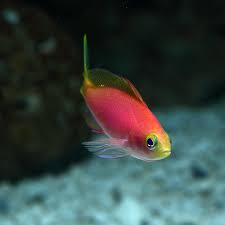In Chinese culture, dragons hold a sacred position as symbols of rain, fertility, and the balance of nature. Their role extends beyond mythology into the heart of communal life, particularly in rain-praying rituals and festivals. These ceremonies, deeply rooted in traditional beliefs, emphasize humanity’s dependence on nature and the spiritual connection between people and the elements. The dragon’s ability to summon rain and control water made it central to these rituals, especially in agricultural societies where rainfall was crucial for survival.

Dragons as Rainmakers in Chinese Beliefs
In Chinese mythology, dragons are regarded as celestial beings capable of controlling rain, clouds, and rivers. This association made them the focus of rituals aimed at invoking rain during periods of drought. Known as “Long Wang” (Dragon Kings), these dragons were believed to dwell in seas, rivers, and lakes, governing the water cycles essential for agriculture.
The Dragon Kings in Rain-Praying Practices
Rain-praying rituals often involved honoring the Dragon Kings, who were considered guardians of the natural balance. These ceremonies were conducted by emperors, local officials, or community leaders, depending on the severity of the drought.
- Offerings to Dragon Kings: Rituals included offerings of food, incense, and prayers at dragon temples or altars near water sources. These acts were meant to appease the Dragon Kings and encourage them to release rain.
- Dragon Dance Performances: In some regions, dragon dances accompanied the rituals, symbolizing the dragon’s movement through the heavens to summon clouds and rain.
Key Festivals Featuring Dragons in Rain-Praying Ceremonies
1. The Dragon Boat Festival
The Dragon Boat Festival, celebrated on the 5th day of the 5th lunar month, is one of the most iconic dragon-related festivals in China. While it is widely known for its boat races, its origins are deeply connected to water and agricultural prosperity.
- Rain-Praying Traditions: In ancient times, communities held dragon boat races to honor water deities and invoke rainfall. The boats, shaped like dragons, symbolized the dragon’s energy and its ability to stir the heavens.
- Dragon King Worship: In southern China, offerings are made to the Dragon Kings during the festival, reflecting gratitude for their blessings and a plea for balanced rainfall.
2. The Spring Dragon Festival (Longtaitou)
The Spring Dragon Festival, celebrated on the second day of the second lunar month, marks the time when the “dragon raises its head” and brings rain to the earth. This festival is particularly significant in rural areas, where farmers prepare for the planting season.
- Rituals to Call for Rain: Families offer sacrifices, including incense and symbolic foods, to the Dragon Kings. Water from wells and rivers is collected and blessed as a gesture of gratitude and hope for a fruitful harvest.
- Cultural Beliefs: It is said that activities during this festival, such as eating foods shaped like dragons or cutting hair, align with the dragon’s energy, ensuring good fortune and rain.
Dragon Dances in Rain-Praying Ceremonies
The dragon dance, an integral part of many Chinese festivals, also plays a vital role in rain-praying rituals. These performances are a symbolic reenactment of dragons moving through the skies, summoning clouds, and releasing rain.
- Structure of the Dance: The dragon, often made of fabric and bamboo, is animated by a group of dancers. Its movements mimic the sinuous flow of water and clouds.
- Community Participation: Villagers or townspeople come together to perform and watch the dance, reinforcing communal bonds and shared hopes for prosperity.
In areas prone to drought, the dragon dance is often performed near rivers or fields, emphasizing the connection between the dragon and the local environment.
Temples and Ritual Sites Dedicated to Dragons
Dragon temples, known as “Longwang Miao”, are scattered throughout China and serve as focal points for rain-praying rituals. These temples are often located near water sources, such as rivers, lakes, or reservoirs, symbolizing the dragon’s domain.
- Offerings and Prayers: During droughts, communities gather at these temples to present offerings and recite prayers to the Dragon Kings.
- Architectural Features: The temples often feature dragon motifs, including sculptures, murals, and roof decorations, emphasizing the dragon’s importance in local beliefs.
Regional Variations in Dragon Worship and Rain-Praying Practices
Southern China
In provinces like Guangxi and Guangdong, where agriculture relies heavily on water, rain-praying rituals are more elaborate. Dragon boat races, accompanied by sacrifices to water deities, are common during festivals.
Northern China
In drier regions like Shanxi and Inner Mongolia, rain-praying ceremonies often involve communal gatherings at dragon temples. Here, the focus is on appeasing the Dragon Kings to ensure water for crops and livestock.
Modern Interpretations and Revival
While the reliance on rain-praying rituals has diminished due to advances in irrigation and technology, the cultural significance of dragons in these practices endures. Today, festivals like the Dragon Boat Festival and Spring Dragon Festival are celebrated as cultural heritage, preserving the symbolism of dragons as protectors of nature and agricultural prosperity.
In some rural areas, traditional rain-praying ceremonies are still performed during severe droughts, reflecting a deep-seated respect for the natural world and its mythical guardians.
Conclusion
The role of dragons in rain-praying rituals and festivals underscores their profound influence on Chinese culture. As symbols of rain and fertility, dragons have been central to agricultural societies, bridging the gap between human needs and the forces of nature. Through festivals, dances, and temple rituals, the legacy of dragon worship continues to thrive, celebrating the enduring bond between humanity and the natural world.










